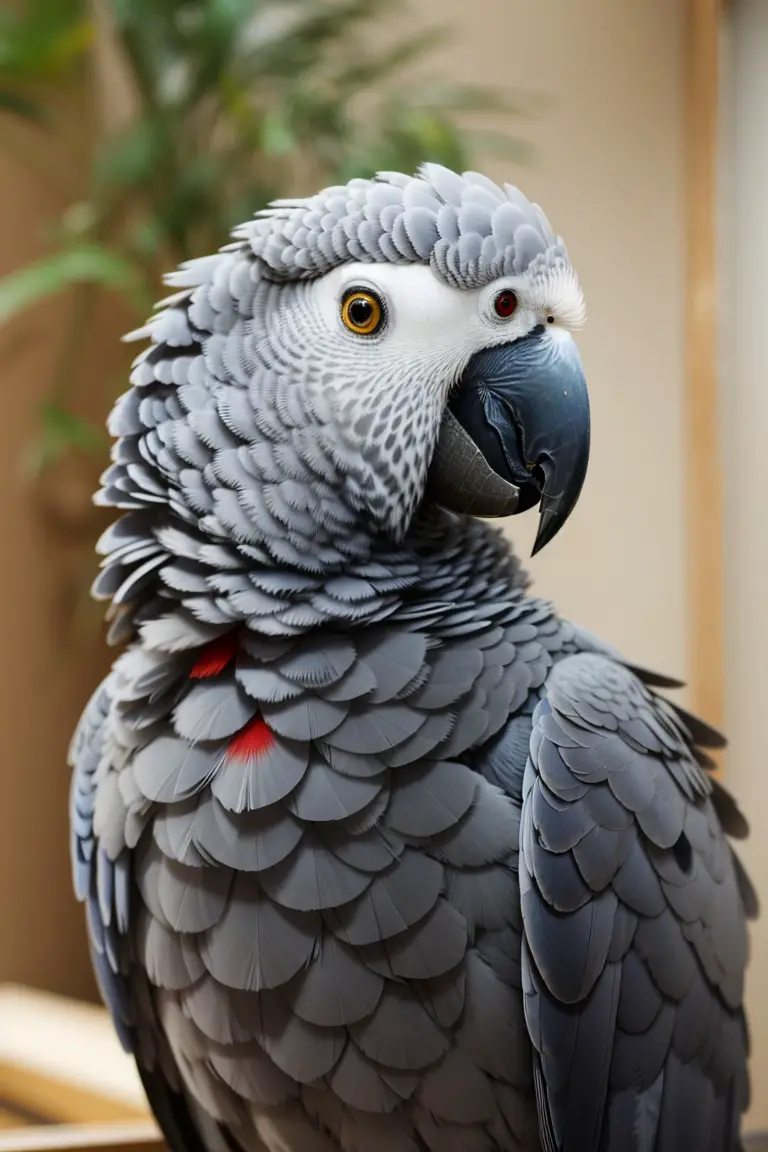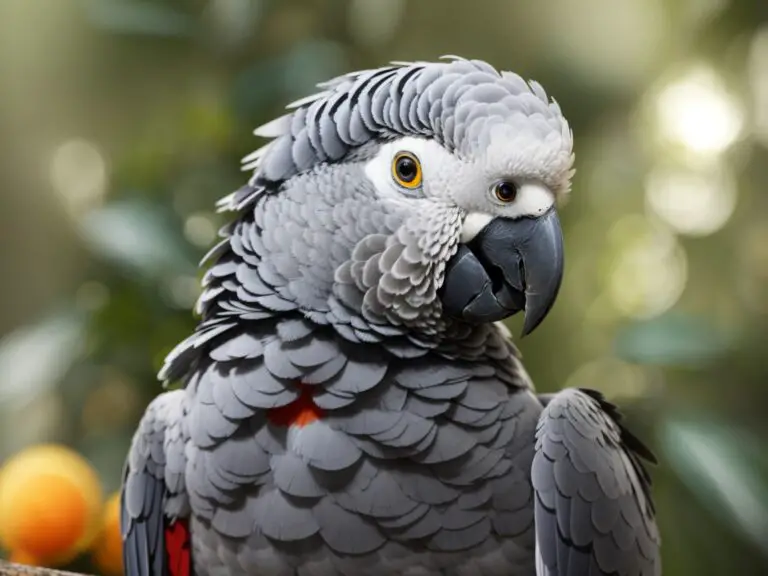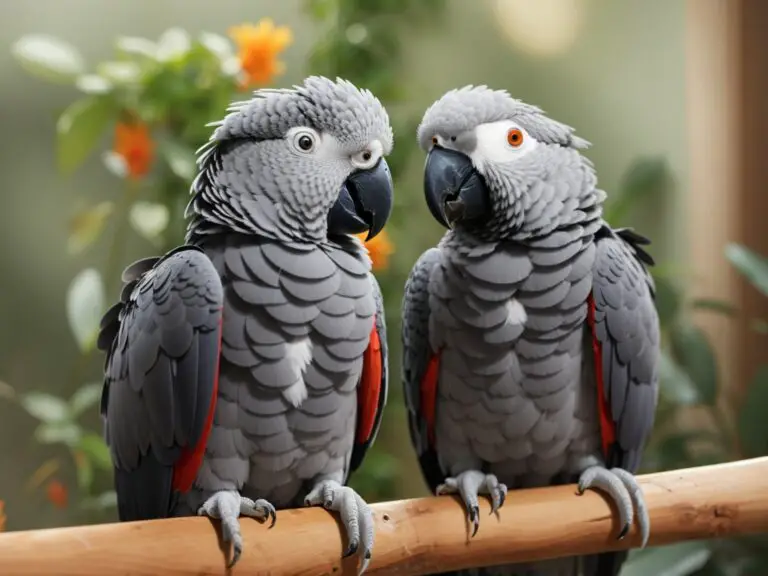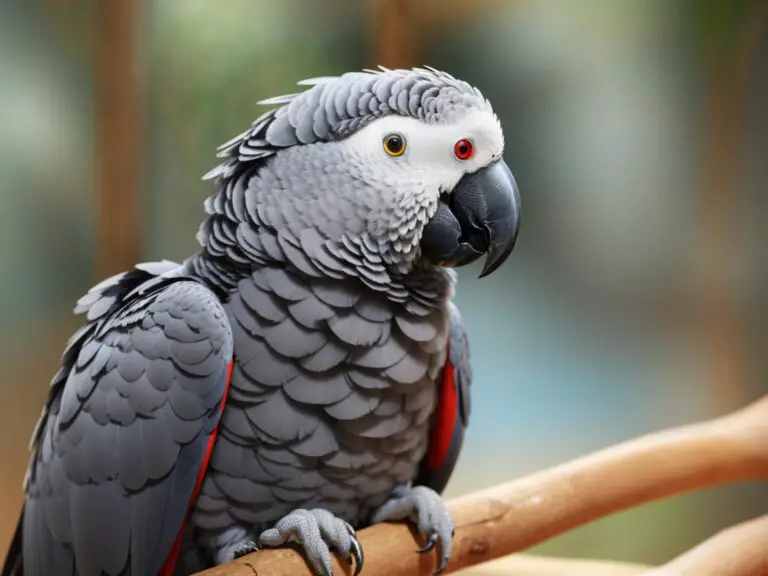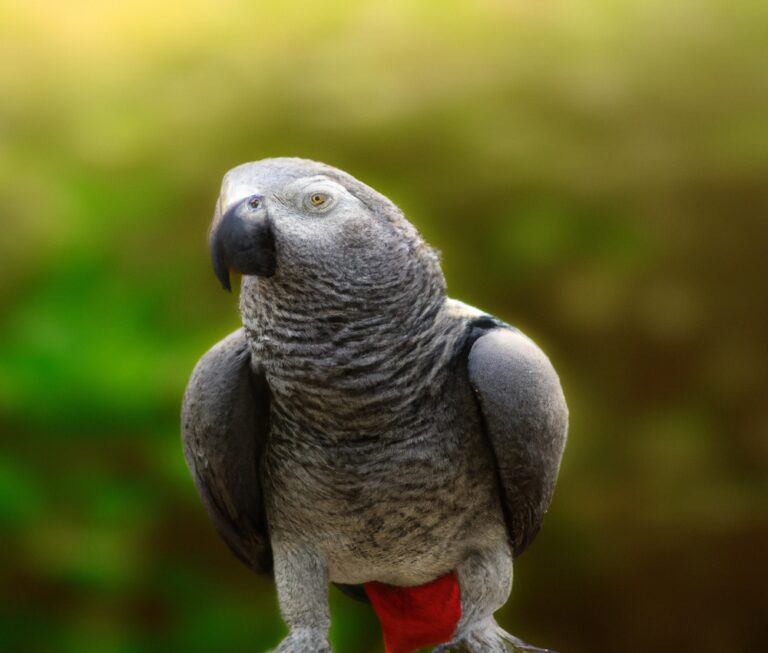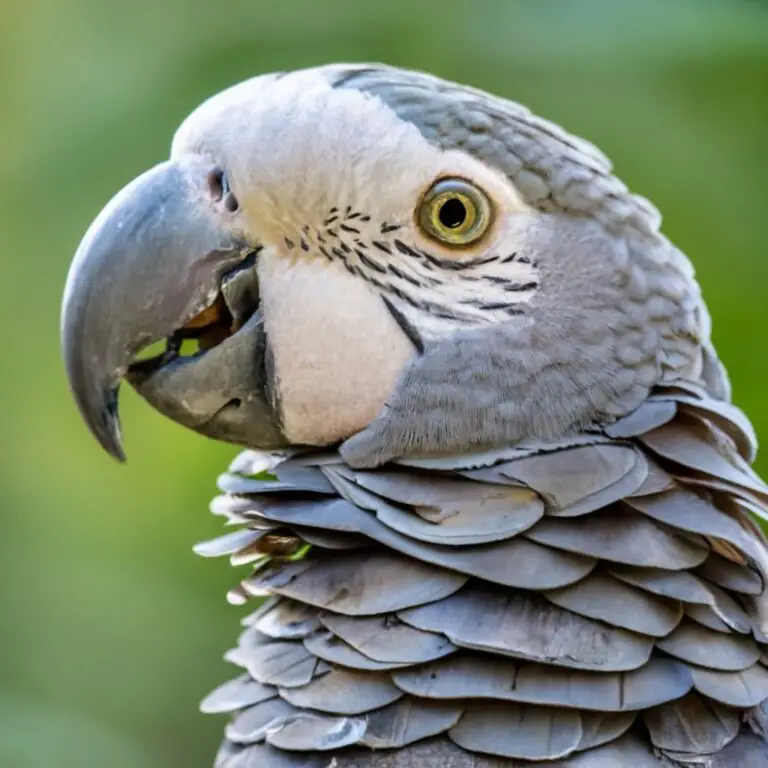How To Trim African Grey Parrot Wings?
Key Takeaways:
- Trimming African grey parrot wings is important for their safety and to prevent them from flying away.
- It is recommended to have a professional trim your African grey parrot’s wings to ensure it is done correctly.
- Regular wing trimmings can help keep African grey parrots healthy and reduce the risk of accidents.
- Trimming the wings of African grey parrots should be done with caution and care to avoid causing them stress or injury.
Have you ever wondered how to trim African grey parrot wings? It’s not just a matter of aesthetics – it’s about ensuring the safety and well-being of these incredible birds.
African grey parrots possess remarkable flying abilities, yet untrimmed wings can pose potential dangers.
In this article, I’ll guide you through the process of wing trimming, from preparing the necessary tools to ensuring a safe and comfortable environment. We will also explore alternatives to wing trimming and address common FAQs. So, let’s get started and help your African grey parrot soar safely in its environment!
| Method | Pros | Cons |
| Professional grooming | – Done by experienced professionals – Ensures proper trimming without injury – Can ask for guidance and tips | – Can be expensive – Requires finding a qualified groomer – May cause stress and anxiety for the bird |
| Do-it-yourself (DIY) | – More cost-effective – Allows you to bond with the bird – Gives you greater control over the process | – Requires research and learning about wing anatomy – Risk of improper trimming and potential injury – Can be stressful for both you and the bird |
| Regular exercise and flight space | – Maintains physical health and muscle tone – Provides mental stimulation – Allows the bird to engage in natural behaviors | – May require a large living space – Requires supervision to prevent accidents or escapes – Not suitable for all living environments |
Understanding the importance of wing trimming for African grey parrots
Understanding why wing trimming is important for African grey parrots is key to their safety and well-being.
The natural flying abilities of African grey parrots
African grey parrots have excellent flying abilities due to their long wings, strong muscles, and agile bodies. They are known for their smooth and graceful flight, allowing them to navigate through trees and forests with ease.
Their natural flying skills are crucial for their physical and mental well-being, as flying is an important aspect of their natural behavior and exercise.
However, it is important to understand that wing trimming is sometimes necessary for their safety and the safety of their human companions.
The potential dangers of untrimmed wings
The potential dangers of untrimmed wings for African grey parrots are significant.
Untrimmed wings can lead to accidental escapes or injuries from flying into objects or windows.
They may also cause behavioral issues, as the parrot can become frustrated or stressed when unable to fly properly.
Additionally, untrimmed wings can make it difficult to establish a bond and trust with the parrot, as they may see their owner as a threat.
Regular wing trimming is important to mitigate these risks.
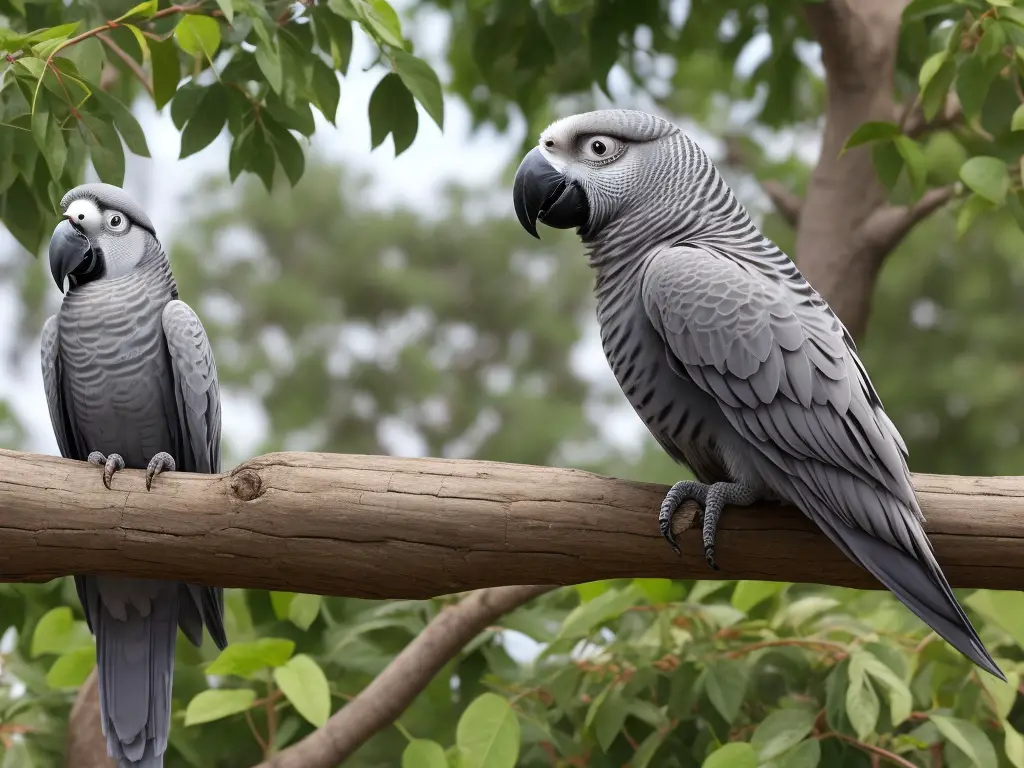
The benefits of wing trimming for African grey parrots
The benefits of wing trimming for African grey parrots include:
- increased safety indoors by preventing accidental escapes
- reduced risk of injury from flying into objects or colliding with windows
- easier training and handling due to decreased flight capability
- improved control in social interactions with humans and other pets.
Preparing for wing trimming
Before you begin trimming your African grey parrot’s wings, make sure you have all the necessary tools and supplies ready.
Create a safe and comfortable environment for the process and ensure your parrot is calm and cooperative.
Gathering the necessary tools and supplies
To gather the necessary tools and supplies for wing trimming your African grey parrot, you’ll need:
- Wing trimming scissors or clippers: These specialized tools are designed to safely and accurately trim the primary flight feathers without causing any harm to your parrot.
- Styptic powder: This is used to stop any bleeding that may occur if a feather is accidentally cut too close to the blood vessels.
- Towels or a comfortable restraint device: These will help you safely handle and restrain your parrot during the wing trimming process.
- Treats and positive reinforcement: Having some of your parrot’s favorite treats on hand will help keep them calm and reward them for their cooperation.
Remember, it’s important to have all these items ready before you begin, so you can create a safe and stress-free environment for both you and your parrot.
Creating a safe and comfortable environment
When creating a safe and comfortable environment for your African grey parrot, there are a few key things to keep in mind. Firstly, make sure the cage is secure and free from any potential hazards like sharp edges or loose wires.
Additionally, provide plenty of toys and perches for mental stimulation and exercise.
It’s also important to maintain a consistent temperature and humidity level in the room to keep your parrot comfortable. Lastly, avoid exposing your parrot to loud noises or strong odors as they can cause stress.
Ensuring the parrot is calm and cooperative
To ensure your African grey parrot is calm and cooperative during the wing trimming process, it’s important to create a quiet and comfortable environment.
Use positive reinforcement techniques like treats and praise to help your parrot associate the experience with positive outcomes.
Patience and a gentle approach will go a long way in keeping your parrot at ease throughout the process.
The wing trimming process
When it’s time to trim your African grey parrot’s wings, it’s important to understand the process and follow safe instructions.
Locating the primary flight feathers
Locating the primary flight feathers on an African grey parrot is important for accurate wing trimming.
These flight feathers are the longest and strongest feathers towards the outer edge of the parrot’s wings.
They provide the main lift and propulsion during flight.
To find them, gently spread out the parrot’s wing and look for the feathers that extend beyond the others.
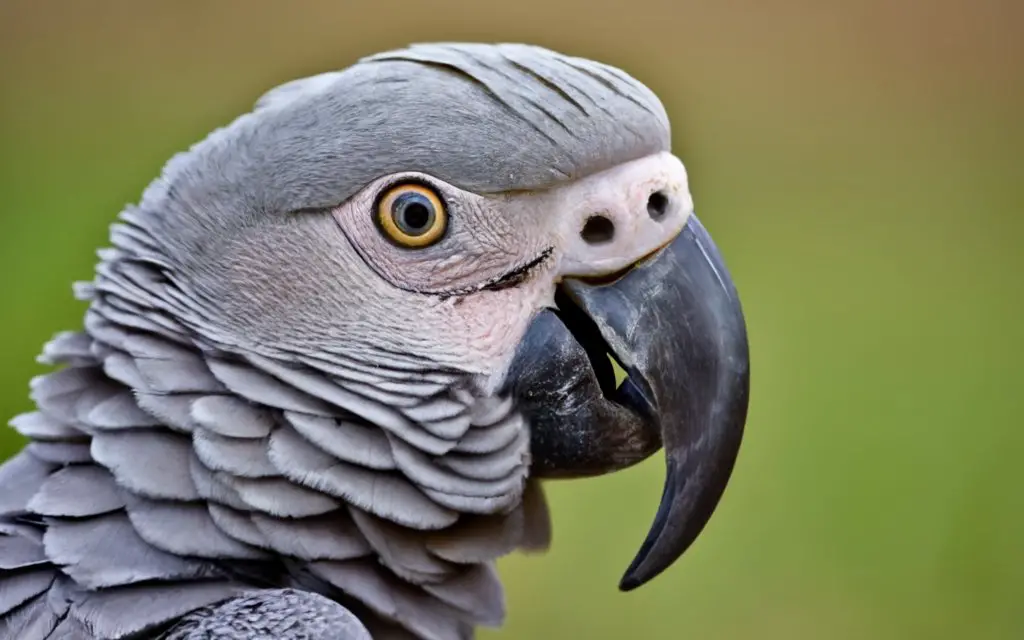
Understanding the different trimming methods
Understanding the different trimming methods is important when it comes to safely trimming an African grey parrot’s wings. The two main methods are the full trim, which involves removing all primary flight feathers, and the partial trim, which involves removing a few feathers to reduce flight but still allow controlled gliding.
Both methods require precision and should be done by experienced individuals.
Following step-by-step instructions for safe trimming
To safely trim the wings of your African grey parrot, follow these step-by-step instructions:
- Gather the necessary tools: You’ll need a pair of sharp bird scissors or nail clippers specifically designed for trimming feathers.
- Create a safe environment: Find a quiet and well-lit space where you can comfortably handle your parrot. Put a towel or soft surface on a table to provide stability.
- Ensure your parrot is calm: Before starting, make sure your parrot is relaxed and comfortable. Offer treats or engage in gentle interaction to encourage a calm state.
- Locate the primary flight feathers: These are the long, outermost feathers on the wings. They are usually darker and more rigid than the other feathers.
- Start trimming: Carefully trim a small portion of the primary flight feathers. Trim only a few feathers at a time, without cutting into the blood-filled shaft.
- Observe for any bleeding or discomfort: Monitor your parrot closely during the process. If you accidentally cut into a blood feather, apply styptic powder or cornstarch to stop the bleeding.
- Gradually trim all the primary feathers: Trim a few feathers every few days until you achieve the desired level of flight restriction. Take breaks if needed to minimize stress.
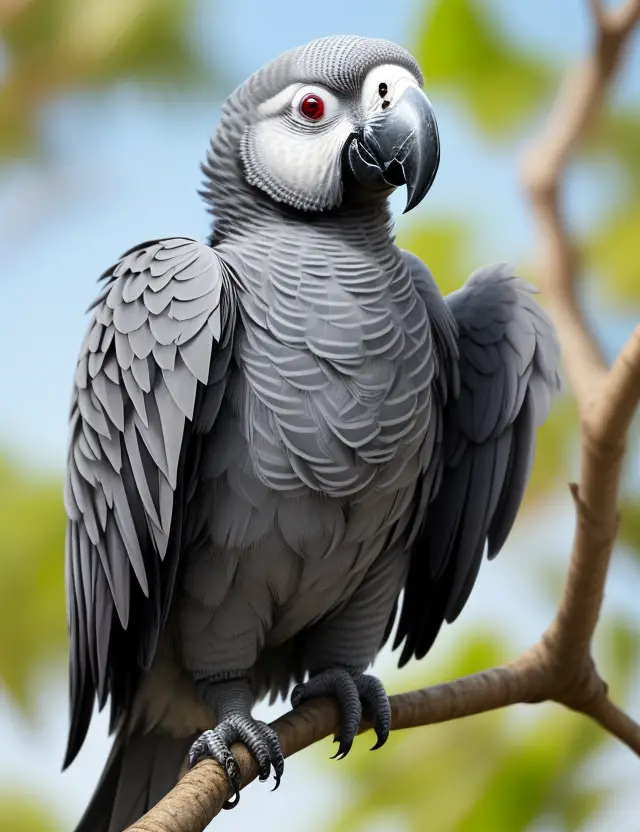
Post-trimming considerations and care
After trimming the African grey parrot’s wings, it is important to monitor their behavior and reaction.
Additionally, providing additional support during the adjustment period and regularly assessing and maintaining the trimmed wings are key considerations.
Monitoring the parrot’s behavior and reaction
Monitoring the parrot’s behavior and reaction is essential after wing trimming. Watch for signs of stress, discomfort, or physical problems like bleeding.
Observe changes in appetite, energy levels, and social interactions.
Seek veterinary help if needed. Keep an eye on how the parrot adjusts to its trimmed wings and provide extra support during the adjustment period.
Providing additional support during the adjustment period
During the adjustment period after wing trimming, it’s important to provide your African grey parrot with extra support.
This can include offering reassurance, providing plenty of mental stimulation and enrichment, and maintaining a consistent routine.
Be patient and understanding as your parrot adapts to its trimmed wings and ensure a comfortable environment for them to feel safe and secure.
Regularly assessing and maintaining the trimmed wings
Regularly assessing and maintaining the trimmed wings is important to ensure the safety and well-being of your African grey parrot. Keep an eye out for any regrowth or uneven feathers that may need trimming.
It’s also crucial to monitor their behavior and watch for any signs of discomfort or imbalance.
Regular grooming and check-ups will help keep your parrot happy and healthy.
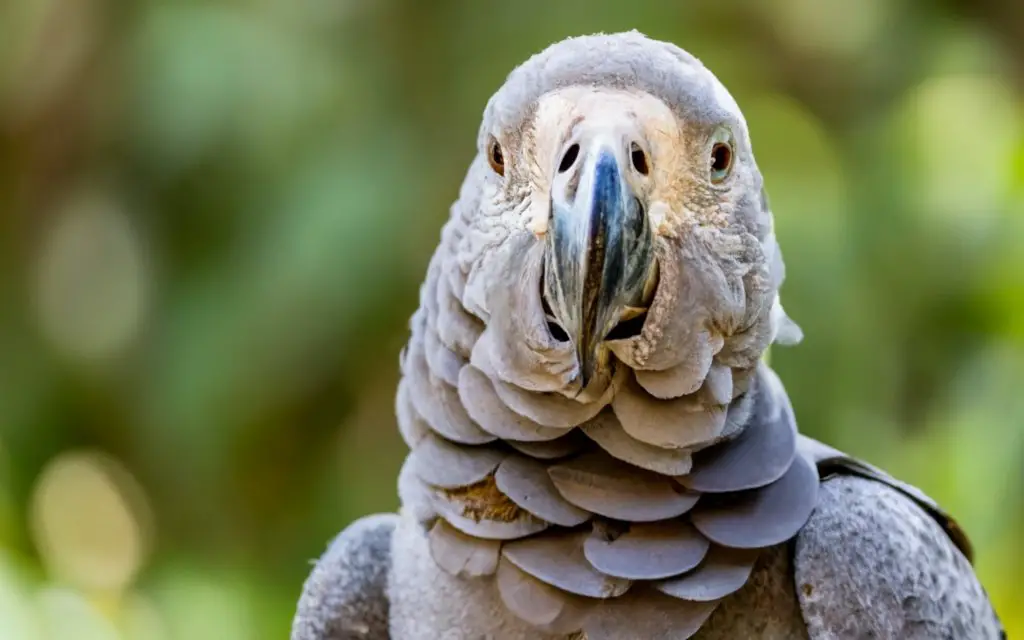
Alternatives to wing trimming
Instead of wing trimming, you can try using flight suits or harnesses for supervised outdoor time.
Another alternative is implementing environmental modifications to prevent flight.
Additionally, consider the potential impact on the parrot’s emotional well-being.
Using flight suits or harnesses for supervised outdoor time
Using flight suits or harnesses for supervised outdoor time can be a safe alternative to wing trimming for African grey parrots.
These accessories allow your parrot to enjoy the outdoors while preventing them from flying away or getting injured.
Just make sure to choose a well-fitted and secure flight suit or harness, and always supervise your parrot during outdoor activities.
Implementing environmental modifications to prevent flight
To prevent flight in African grey parrots, you can implement various environmental modifications.
One effective approach is to create a safe and enclosed space for your parrot, such as a large aviary or flight cage.
Ensure the enclosure has a solid roof, sturdy walls, and secure doors.
Remove any potential hazards that may encourage flight, like high perches or tall furniture.
Additionally, cover windows with curtains or blinds to minimize visual stimuli that can trigger the parrot to fly.
Regularly assess the environment to identify and address any new potential escape routes.
Considering the potential impact on the parrot’s emotional well-being
Trimming an African grey parrot’s wings can have potential emotional impacts.
It may affect their natural behavior and lead to increased stress, anxiety, and frustration.
Some parrots may become less confident and hesitant to explore or interact.
It’s important to consider alternative options and carefully assess the emotional well-being of your parrot before deciding to trim their wings.
Frequently Asked Questions (FAQ)
Is wing trimming painful for African grey parrots?
No, wing trimming is not painful for African grey parrots when done properly.
The process involves trimming the primary flight feathers, which do not have nerves or blood vessels.
However, there may be some discomfort or stress during the process, so it’s important to ensure the parrot is calm and cooperative.
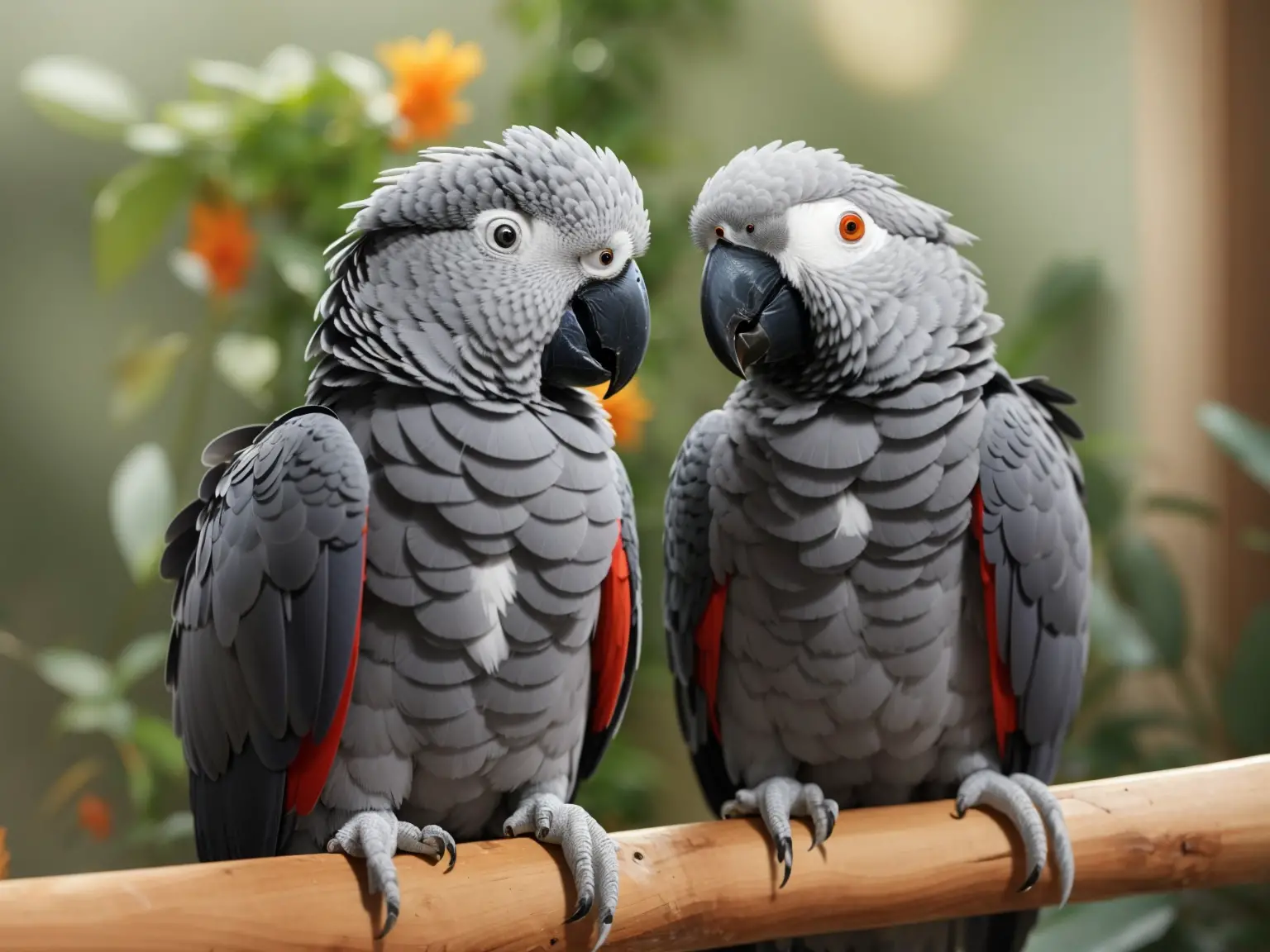
How often should wing trimming be done?
Wing trimming for African grey parrots should be done every 3 to 4 months. This timeframe allows for a balance between maintaining flight control and preventing potential accidents or injuries.
Regular trimming helps keep your parrot safe while still allowing some controlled flight and exercise.
Can wing trimming affect the parrot’s ability to interact and bond with its owner?
Yes, wing trimming can affect the parrot’s ability to interact and bond with its owner. Without the ability to fly, they may feel more vulnerable and rely less on their human companion for support.
However, bonding can still occur through other forms of interaction and enrichment.
Final Verdict
Understanding the importance of wing trimming for African grey parrots is crucial for their safety and well-being. Trimming their wings helps prevent potential dangers and encourages a safer environment.
By preparing adequately, following step-by-step instructions, and providing post-trimming care, owners can ensure a smooth transition for their parrots.
Additionally, alternatives to wing trimming, such as flight suits or environmental modifications, can be viable options. Ultimately, the decision to trim or not to trim wings should be made based on the individual parrot’s needs and the owner’s dedication to safety and enrichment.

